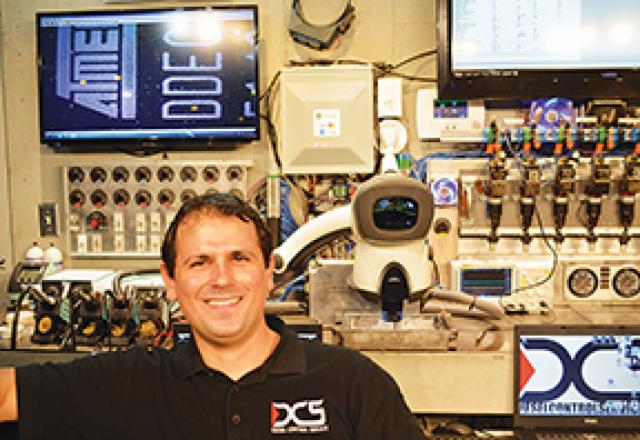This Machine Does Not Have A Brain, Use Yours: Parts Changers And Technicians Part 2:

Last month I discussed a few limitations commonly found in many on board diagnostic systems found in the ECM controlled engines found in today’s trucks. The real problem is how technicians are becoming more and more dependent on these diagnostic systems to do the thinking for them. This is making a new generation of would be techs into parts changers.
Diagnostics is a search for the problem. The idea is to conduct tests that reduce that search area until you find the problem itself. It’s only then when you know you’re not gambling with your customer’s money when you replace that failed part. The fewer guesses you take the fewer good parts end up being replaced. That is or should be the name of the game. Fault codes can be used as clues to narrow the search but not always. Some faults are false leads for example: a throttle position sensor fault in a DDEC IV cannot cause an engine to backfire and generate white smoke at idle. Some guys will say that’s the only fault they see so that must be what is causing the symptoms. They’ll change the sensor and be right back where they started. I’ll then ask them if the temperature sensors look accurate. Is the ECMs coolant temp reading 200 degrees during a cold start and oil temp is in the 40s? That’ll do it. Most ECMs doesn’t see this as a problem but your tech should. A parts changer will see that there are no codes set and move on. They didn’t use their head to realize that the sensor readings indicate a situation that is impossible. Temperature sensor readings can alter injection timing enough to cause white smoke and even backfires. It’s important to check not only for codes but if the sensor values make sense and change in a logical way. The ECM needs good information in order to do it’s most important job…when to turn the injector on and when to turn it off again.
Next it’s time to do an injector cutout test. DDEC III, IV, and V Injector response time diagnostics are nice but are only useful to diagnose issues with the injector output circuits, the solenoids, and the internal armatures. Injector response times will not tell you if the injectors are good or if you have a dead hole. I have yet to see an automatic cutout test that can reliably indicate which cylinder has a problem. In the past when I used these tests I’d run the same test multiple times and get conflicting results. Now I almost always run these tests manually and when cutting out a cylinder I pay careful attention to the pulsewidth of the other injectors. The pulsewidth numbers should rise as the other cylinders work harder to make up for the cut out cylinder. If they don’t you know that cylinder wasn’t making any power. If they all rise then it becomes even more important to listen to the exhaust and watch the stack. A good tech can use his own senses to tell which cylinder is the problem more reliably then the ECM can.
Fernando DeMoura, Diesel Control Service LLC., www.dieselcontrolservice.com Phone 412-327-9400
